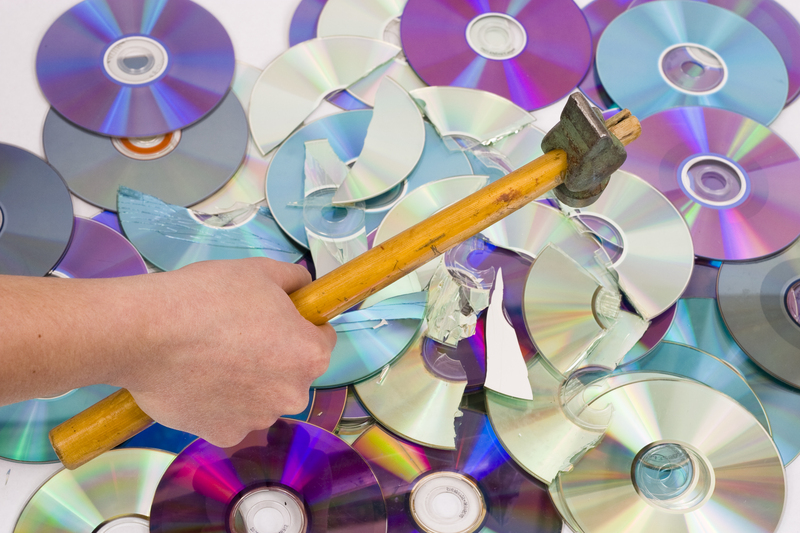The Journey of Recycling Plastic Materials: From Waste to Reusable Products
Plastic waste is a mounting global challenge, but the recycling industry is transforming discarded materials into valuable, reusable products. In this article, we'll explore the entire process -- from throwaway to sustainable item -- and discover why recycling plastic materials is vital for our environment.

Understanding Plastic Waste: The Need for Recycling
Plastic is everywhere--in packaging, bottles, containers, toys, and countless other items. Its convenience and durability have made it a staple of modern life. However, these very properties have created a vast, growing problem: plastic waste.
Estimates suggest that over 8 million tons of plastic end up in our oceans each year. Landfills are overflowing with plastic debris that can take centuries to degrade. Recycling plastic materials is not just a responsible choice; it's a necessity for a sustainable future.
Why Should We Recycle Plastic?
- Environmental Protection: Recycling reduces landfill use and ocean pollution.
- Resource Conservation: It saves petroleum, water, and energy compared to creating new plastic.
- Climate Impact: Fewer emissions result when manufacturing with recycled plastics.
- Economic Opportunity: The industry creates jobs and new business ventures.
The Different Types of Plastics: Not All Plastics Are Created Equal
When discussing the journey of recycling plastics, it's crucial to recognize that not all plastics are the same. Plastics are categorized by numbers (Resin Identification Codes) from #1 to #7, each representing a different material:
- Type 1: PET (Polyethylene Terephthalate) - Common in beverage bottles and food containers.
- Type 2: HDPE (High-Density Polyethylene) - Found in milk jugs, shampoo bottles, and detergent containers.
- Type 3: PVC (Polyvinyl Chloride) - Used in pipes and some packaging.
- Type 4: LDPE (Low-Density Polyethylene) - Used for grocery bags and some wraps.
- Type 5: PP (Polypropylene) - Found in yogurt containers and straws.
- Type 6: PS (Polystyrene) - Styrofoam cups and packing peanuts.
- Type 7: Other - Includes mixed plastics and bioplastics.
Plastics #1 (PET) and #2 (HDPE) are the most commonly recycled, while others are less frequently processed because of economic or technical challenges.
Step-by-Step Process: How Does Plastic Recycling Work?
The plastic recycling journey encompasses several distinct stages. Each step is essential to convert waste plastic into a high-quality, reusable product.
1. Collection and Sorting
The first stage begins with consumers and businesses. Plastic waste is collected through curbside pickup, drop-off centers, or deposit systems.
- Manual Sorting: Workers remove contaminants and separate plastics by resin type.
- Automated Sorting: Optical scanners, air jets, and magnets help efficiently sort plastics by type and color.
Proper sorting is crucial - if different plastics are mixed, the recycling process can fail, or the end product may be weak and impure.
2. Cleaning and Preparation
Once sorted, the plastic materials undergo rigorous cleaning. Labels, food residue, and other contaminants are removed, as these can negatively impact the quality of recycled plastic.
- Washing and Rinsing: Removes dirt, glue, and organic matter.
- Shredding: Plastics are cut into small flakes or chips, making further processing easier.
3. Melting and Pelletizing
The cleaned plastic flakes now enter the recycling facility. Heating and melting transforms the flakes into a viscous liquid.
- Extrusion: The molten plastic is forced through small holes, forming long strands.
- Palletizing: These strands are cooled and chopped into pellets called nurdles, the raw material for new products.
4. Manufacturing New Products
These pellets are the building blocks for an array of recycled plastic products:
- Bottles, containers, and packaging
- Clothing and rugs (from PET fibers)
- Toys, pipes, and plastic lumber
- Automotive parts and construction materials
The final products can themselves be recycled again, completing the plastic materials recycling loop.
Innovations in Plastic Recycling Technology
Recycling plastics isn't static; new technologies are making the process more effective and sustainable.
Advanced Sorting Techniques
- Near-Infrared (NIR) Sorting: Quickly identifies plastic types by their unique optical signatures.
- Artificial Intelligence (AI): Uses machine learning for smarter, more accurate sorting on conveyor belts.
Chemical Recycling (Depolymerization)
Unlike traditional mechanical recycling, chemical recycling breaks plastics back into their original monomers. This process enables more types of plastics to be recycled and results in material that is virtually identical to new plastic.
- Pros: Handles mixed or contaminated plastics; produces high-grade recycled materials.
- Cons: Requires more energy; still under commercial development.
Bioplastics and Eco-Friendly Alternatives
The future may see the rise of biodegradable plastics and plant-based alternatives, but recycling will still play a vital role in managing waste responsibly.
Challenges in the Plastic Recycling Journey
While plastic recycling is a powerful tool, the journey from waste to reusable products faces several obstacles:
- Contamination: Food-stained or mixed plastics lower recycling rates and the quality of end products.
- Economic Viability: Sometimes, manufacturing new plastic is cheaper than recycling, especially when oil prices are low.
- Complex Packaging: Multi-material packaging (e.g., chip bags) is difficult to recycle.
- Consumer Participation: Success depends on diligent sorting, cleaning, and public engagement.
Environmental Impact and Benefits of Recycling Plastic Materials
What difference does recycling plastic make? The benefits extend far and wide:
- Reduces Carbon Footprint: Using recycled plastic can cut emissions by up to 70% compared to new plastic.
- Conserves Natural Resources: Less crude oil and natural gas needed.
- Prevents Pollution: Recycled plastics mean fewer microplastics and less marine debris.
- Creates a Circular Economy: Keeps plastic in use and out of the environment.
Examples: Success Stories in Plastic Recycling
Around the world, innovative programs demonstrate how efficient plastic recycling can be:
- Coca-Cola's PlantBottle uses up to 30% plant-based material and is fully recyclable, proving that sustainable alternatives work at scale.
- Loop Industries developed technology to recycle virtually all PET plastics, including those previously destined for landfill.
- Patagonia makes jackets, shirts, and hats from recycled PET bottles, merging fashion and sustainability.
How You Can Support the Plastic Recycling Process
Every individual plays a crucial role in the plastic recycling journey. Here's how you can help turn waste into reusable plastic products:
- Rinse and sort plastics: Ensure recyclables are clean and separated by type.
- Check your local recycling rules: Not all facilities accept every type of plastic.
- Buy recycled products: Support the market for sustainable goods.
- Reduce single-use plastics: Choose reusable bags, bottles, and containers.

Conclusion: Closing the Loop on Plastic Materials
The journey of recycling plastic materials from waste to reusable products is not just an industrial process, but a collaborative effort involving manufacturers, communities, and individuals worldwide.
By recycling plastic waste, we:
- Reduce pollution and landfill waste
- Conserve resources and energy
- Promote innovation and the circular economy
Every bottle, bag, or container you recycle starts a journey--one that can end in a new product, a greener planet, and a cleaner future for all.
Let's keep plastics moving, from waste to worth.
Frequently Asked Questions About the Journey of Recycling Plastics
What types of plastic can be recycled?
PET (#1), HDPE (#2), and PP (#5) are widely recycled. Consult your local regulations for specifics.
Can recycled plastics be used for food packaging?
Yes, but strict safety standards must be met. Food-grade recycled PET is common.
Is all recycled plastic of lower quality?
Not necessarily. Modern processes--including chemical recycling--can produce recycled plastic with properties almost indistinguishable from virgin material.
What happens if I put the wrong plastic in my recycling bin?
*Contamination slows down sorting and can even render batches unusable. It's essential to follow local guidelines.*
If each of us does our part, the journey of recycling plastic from waste to reusable products will get easier--and our impact on the planet will transform for the better.